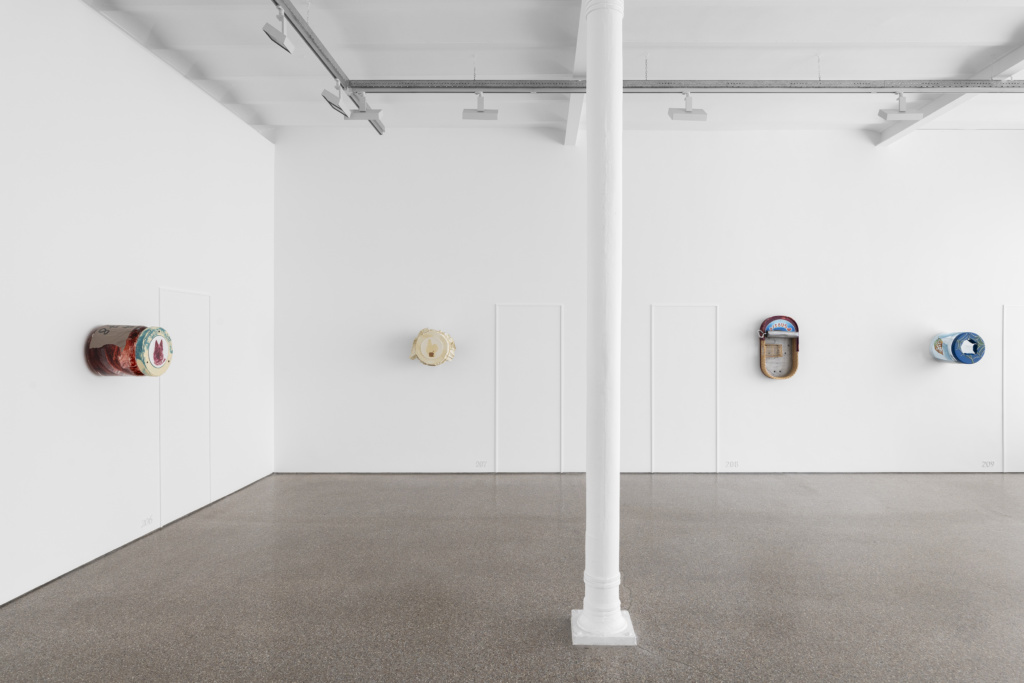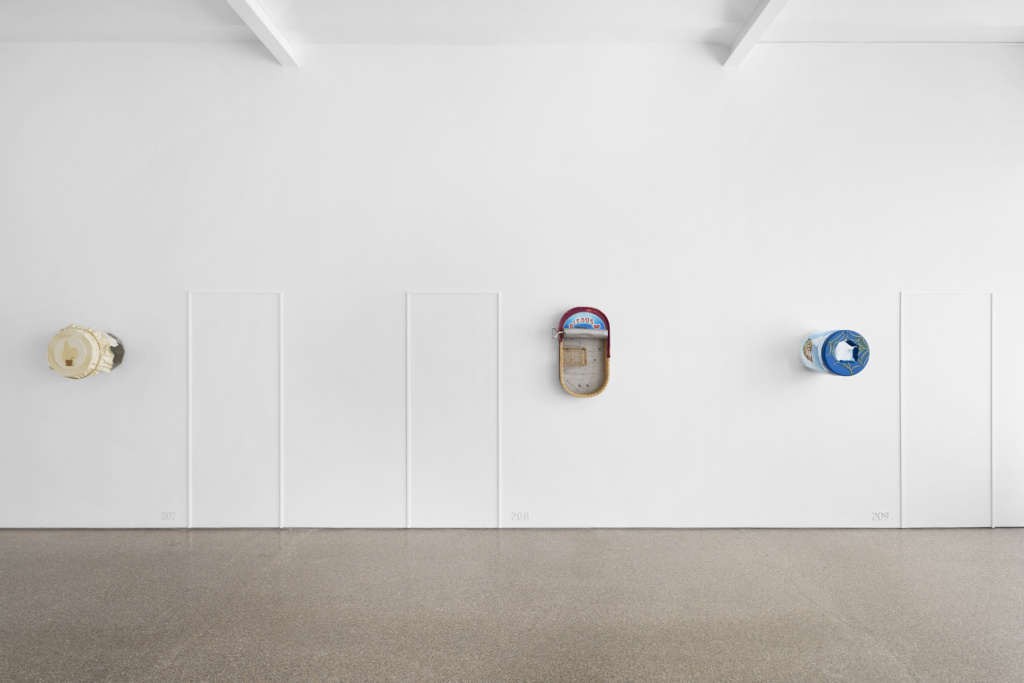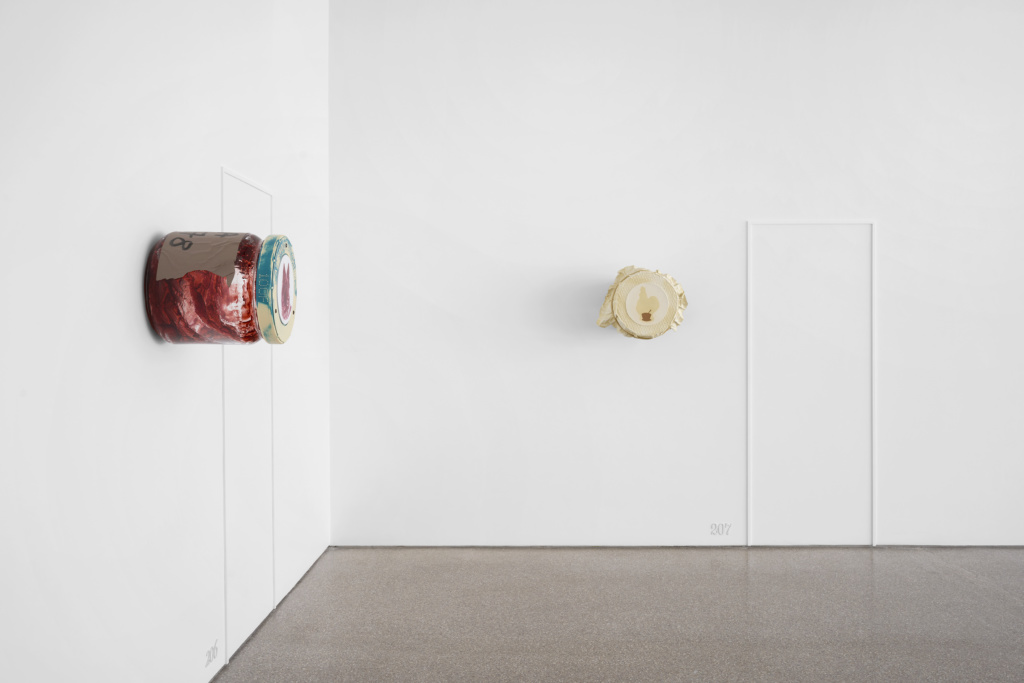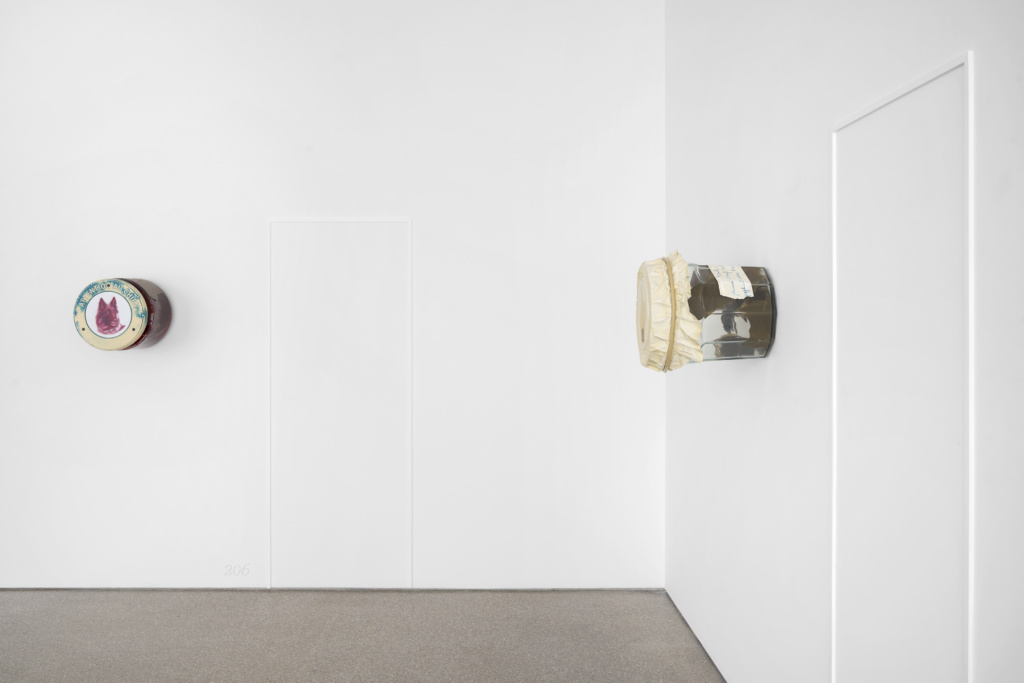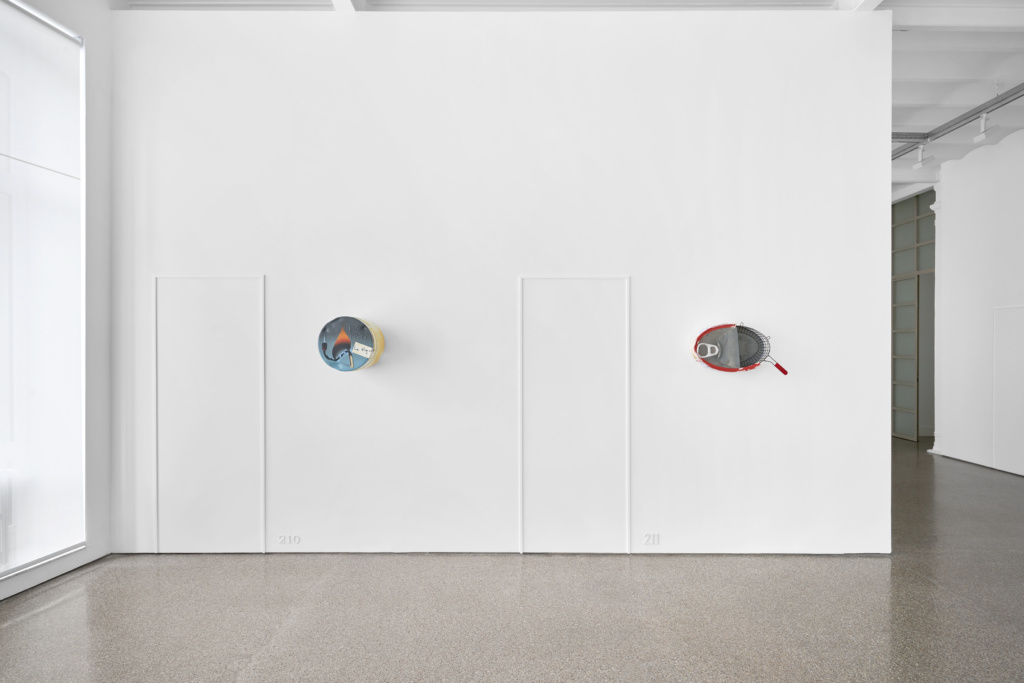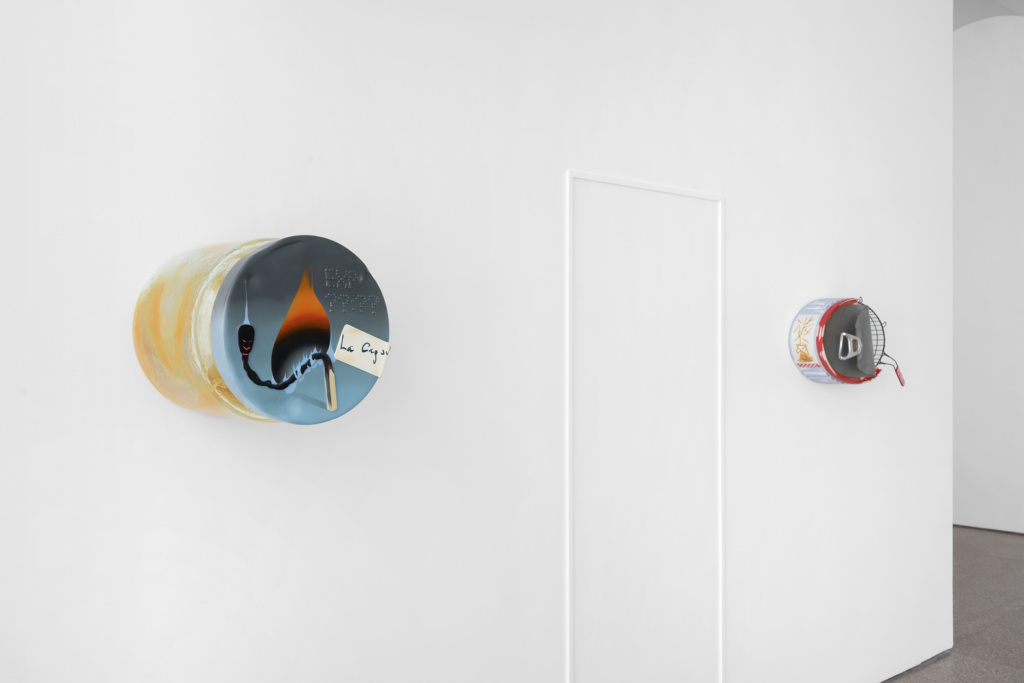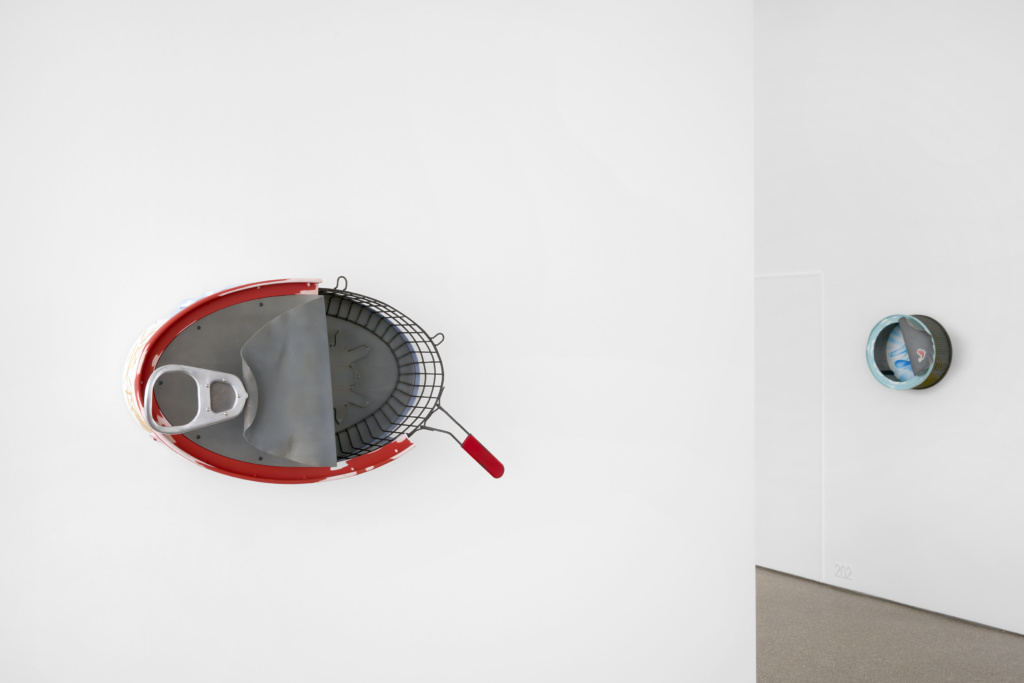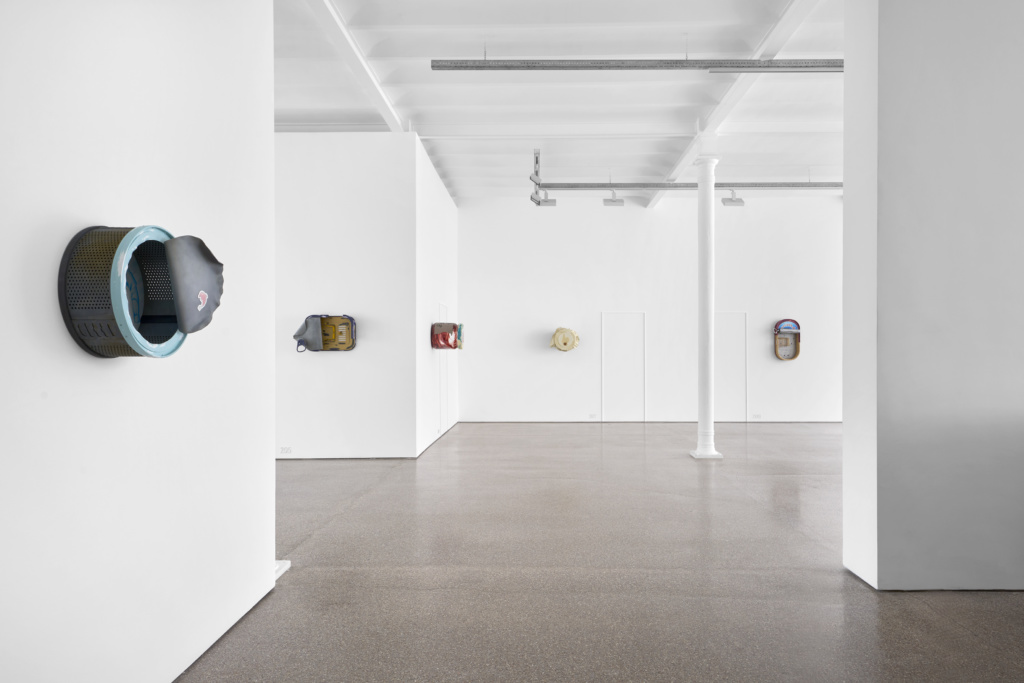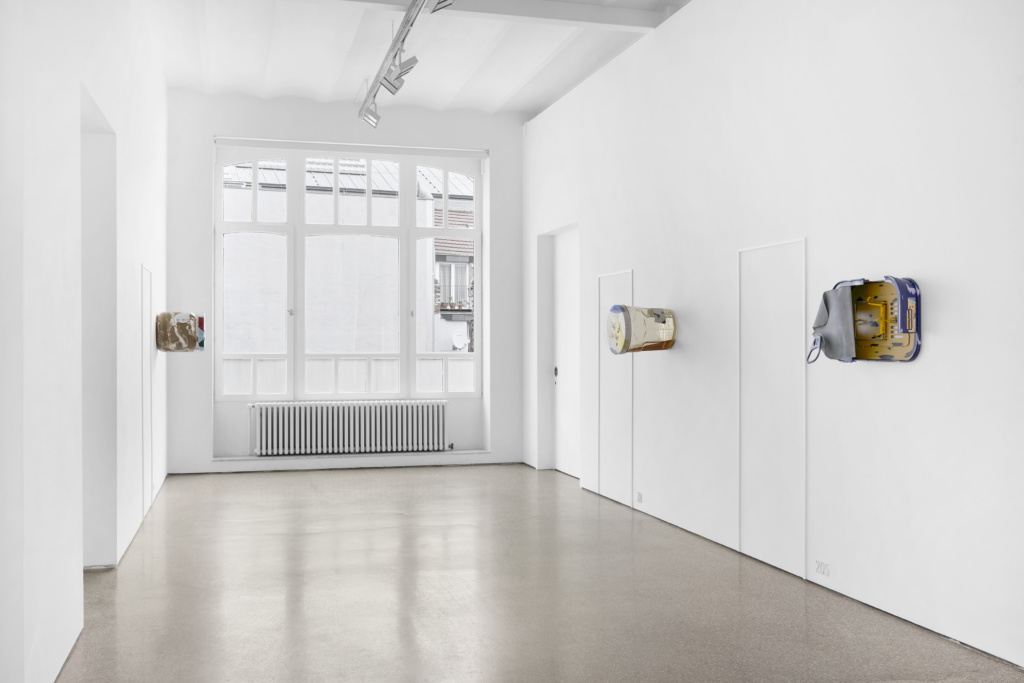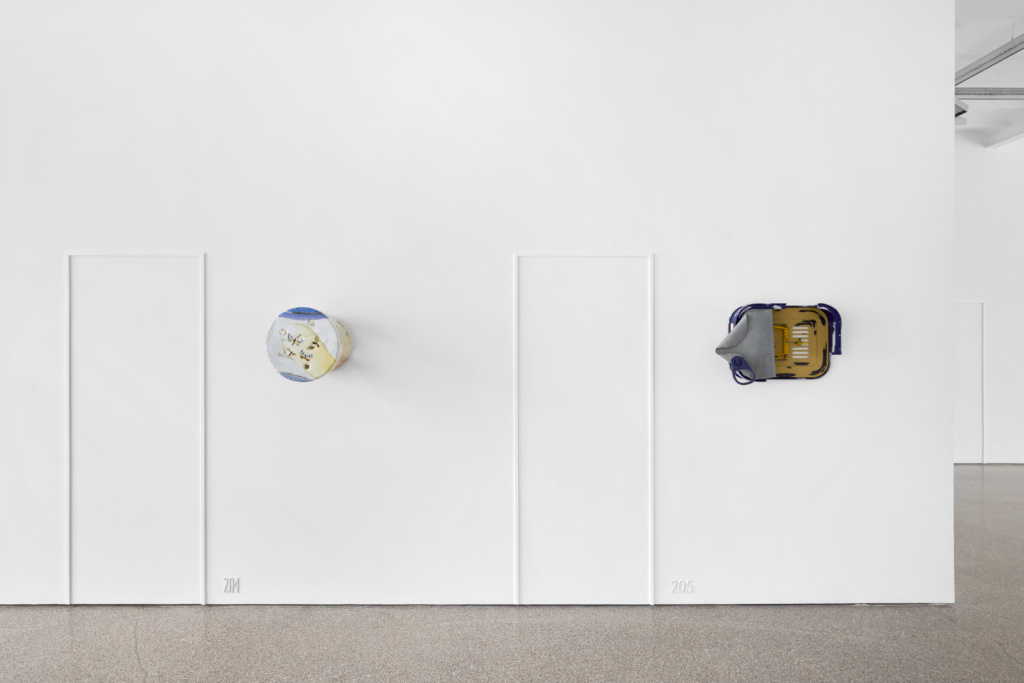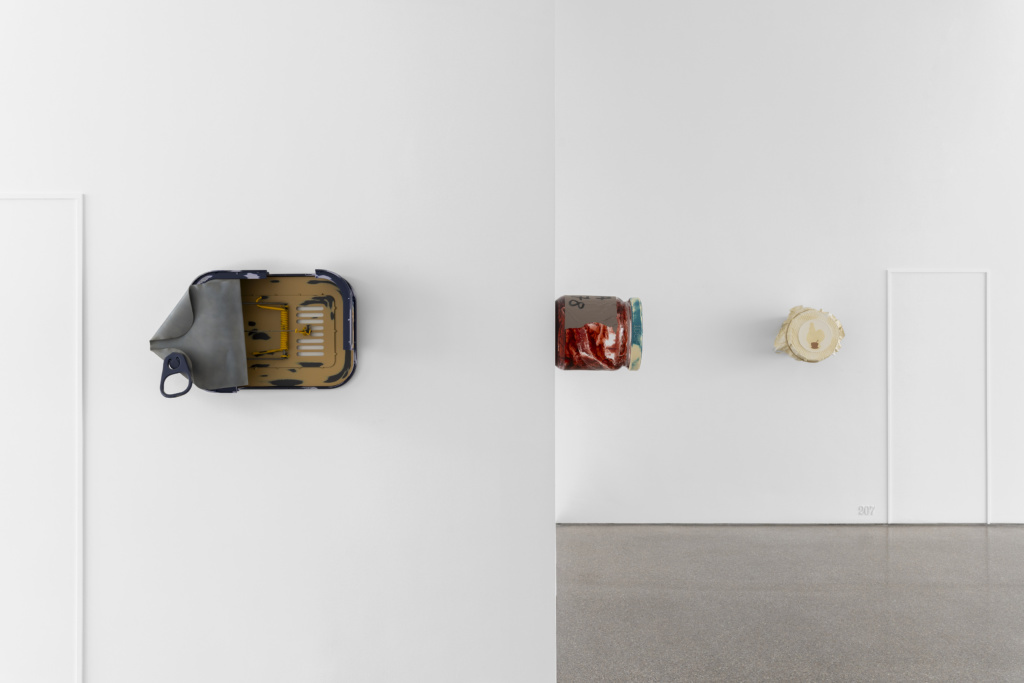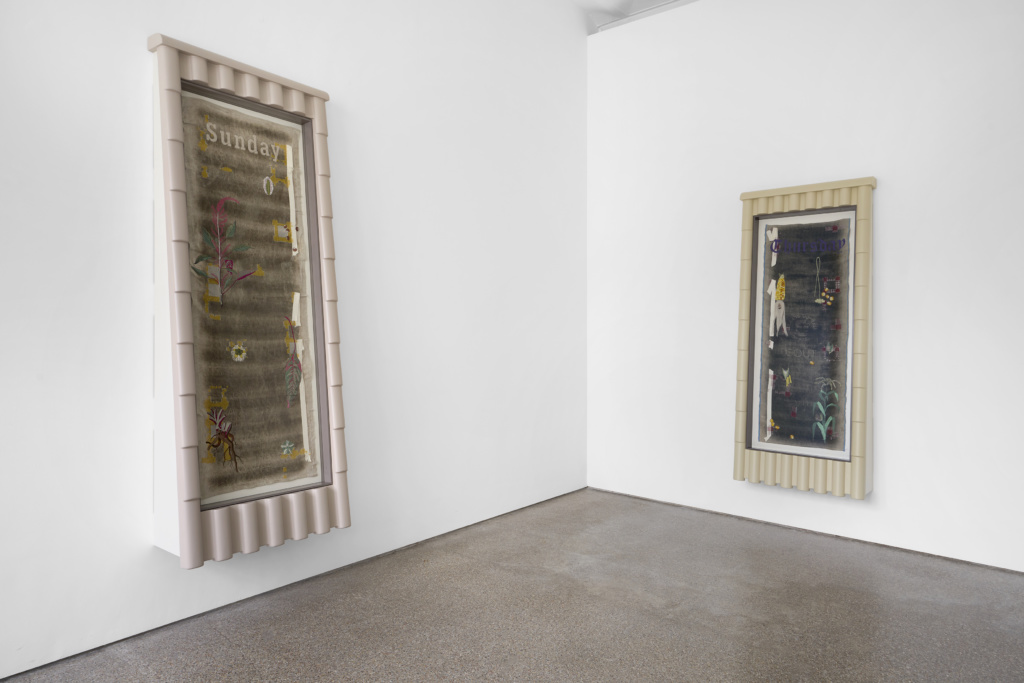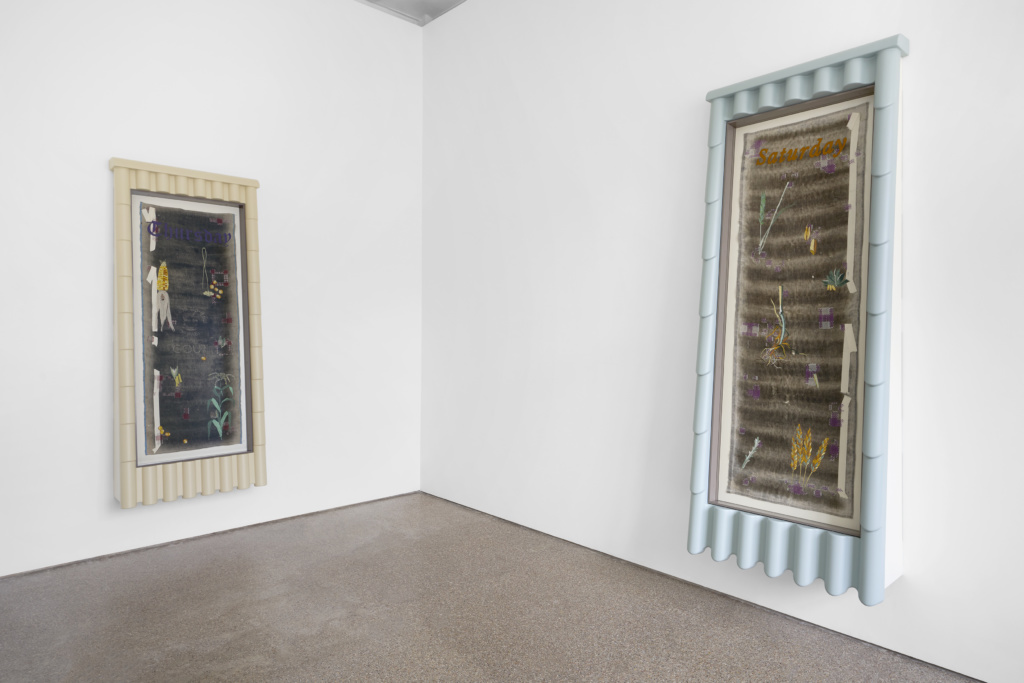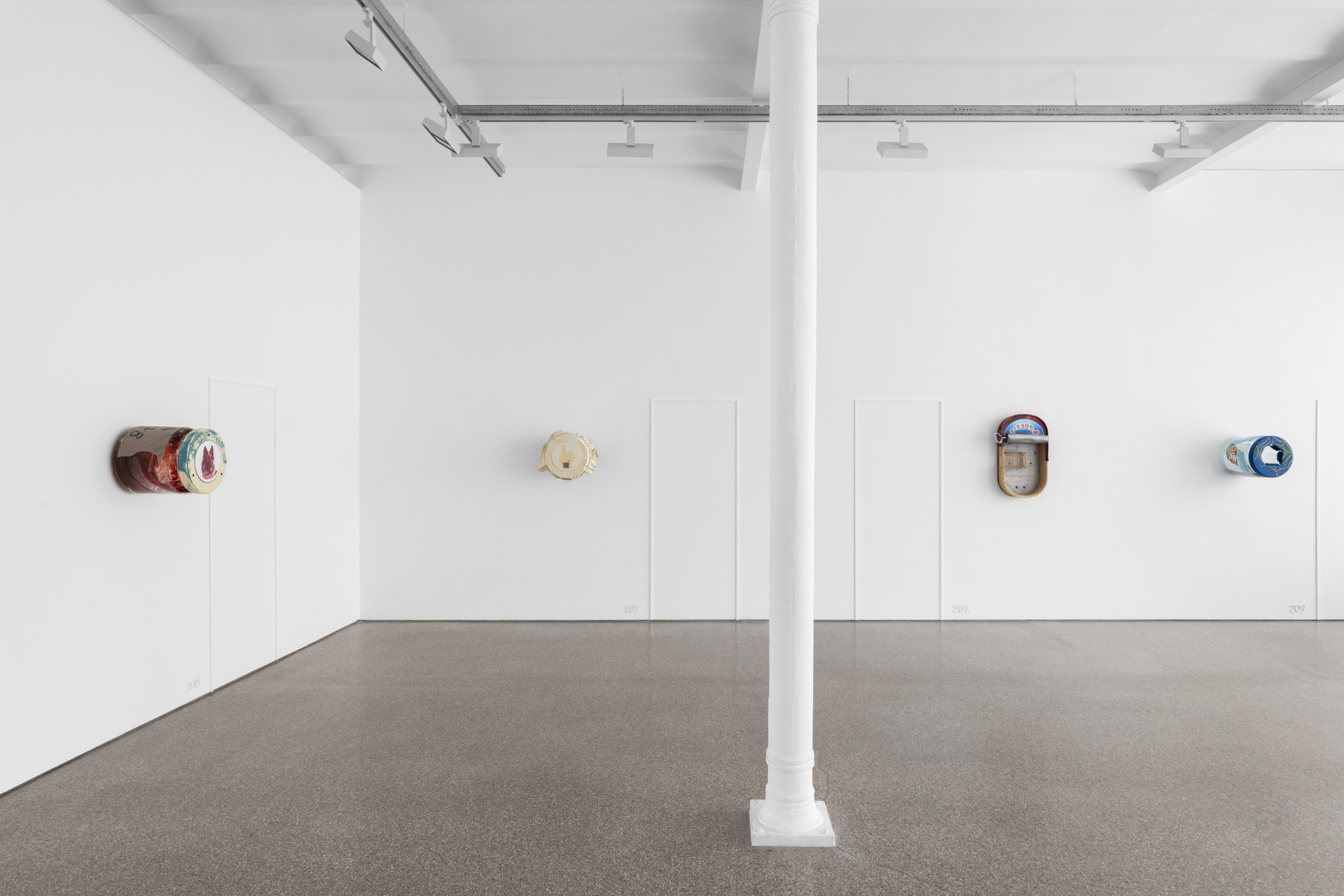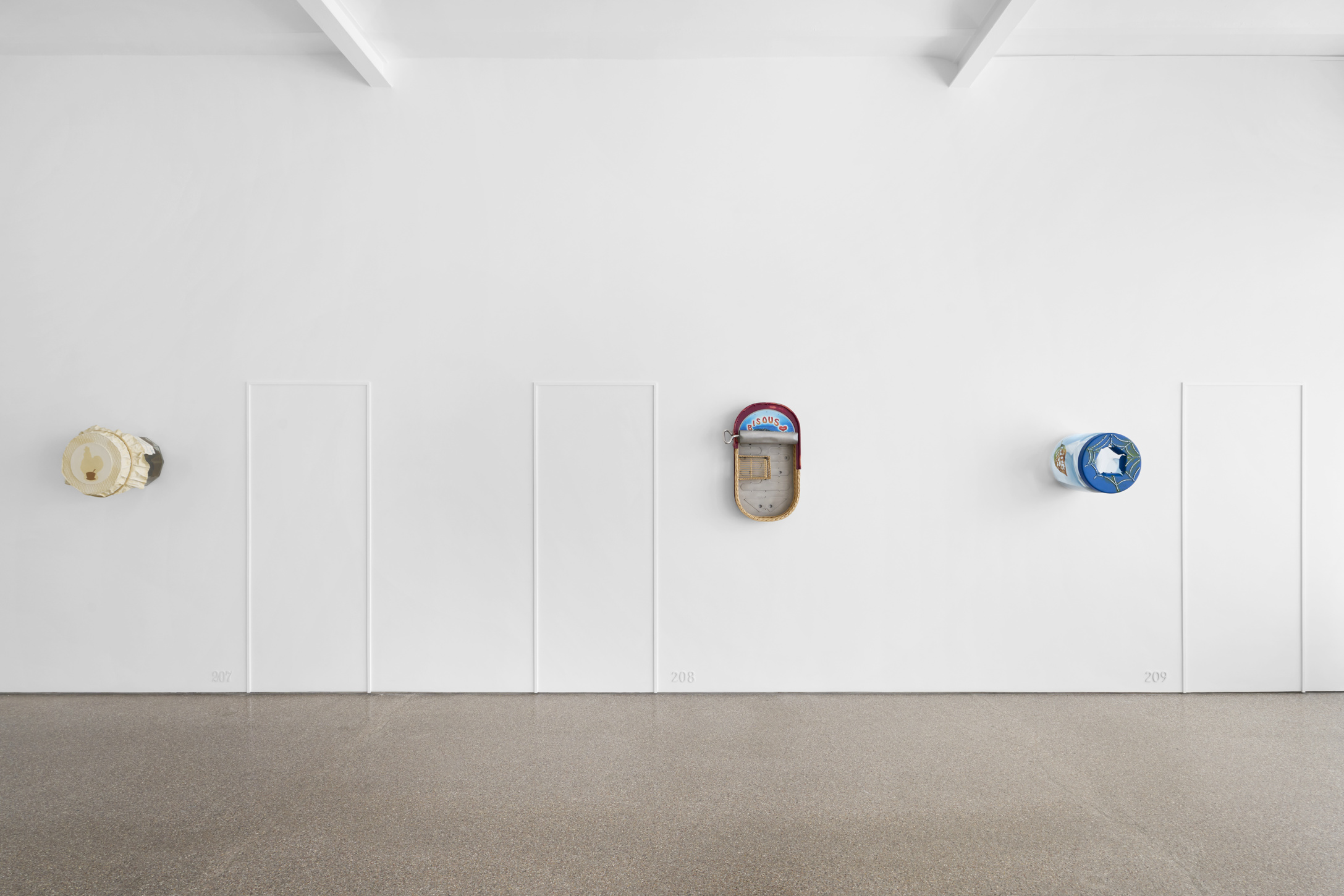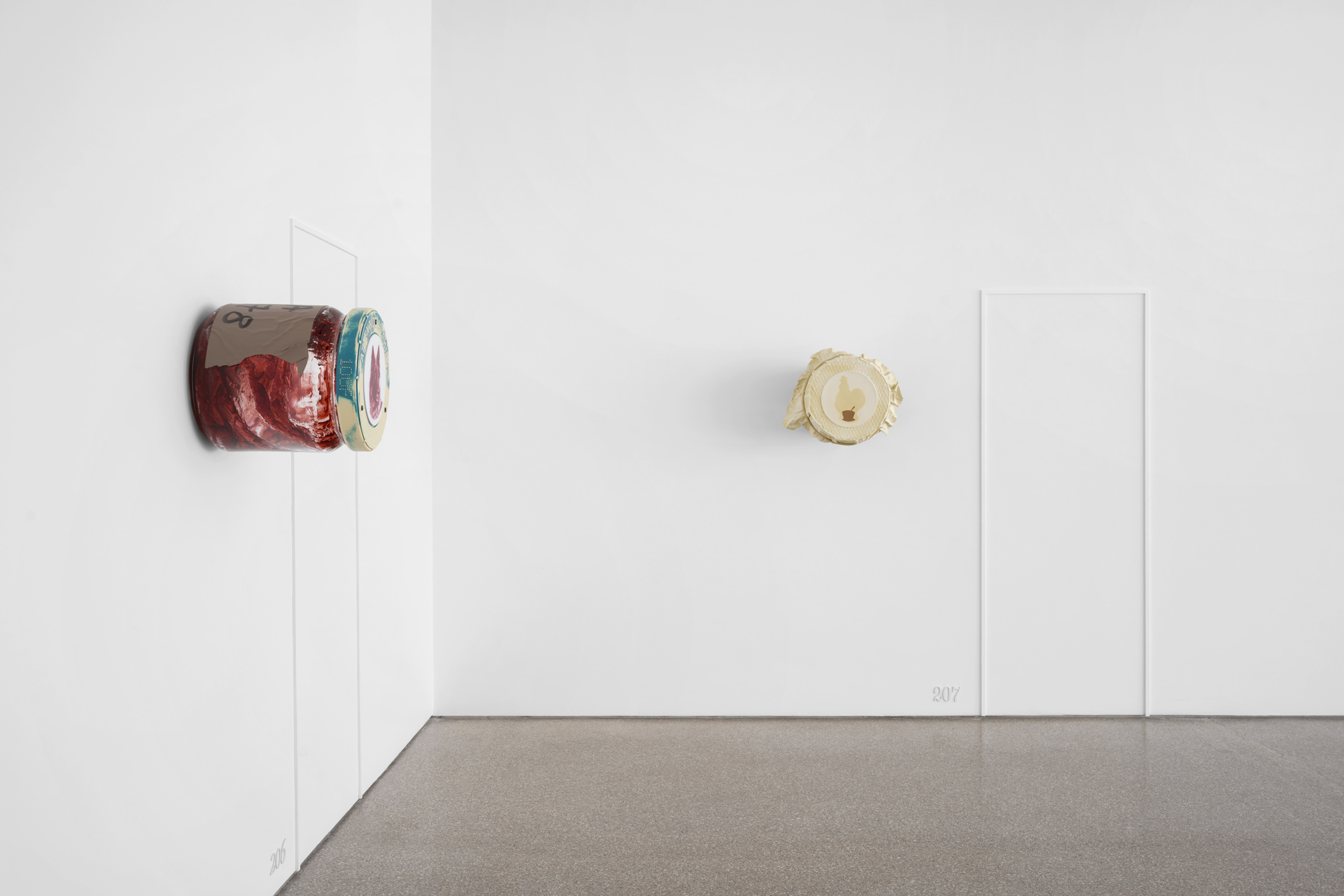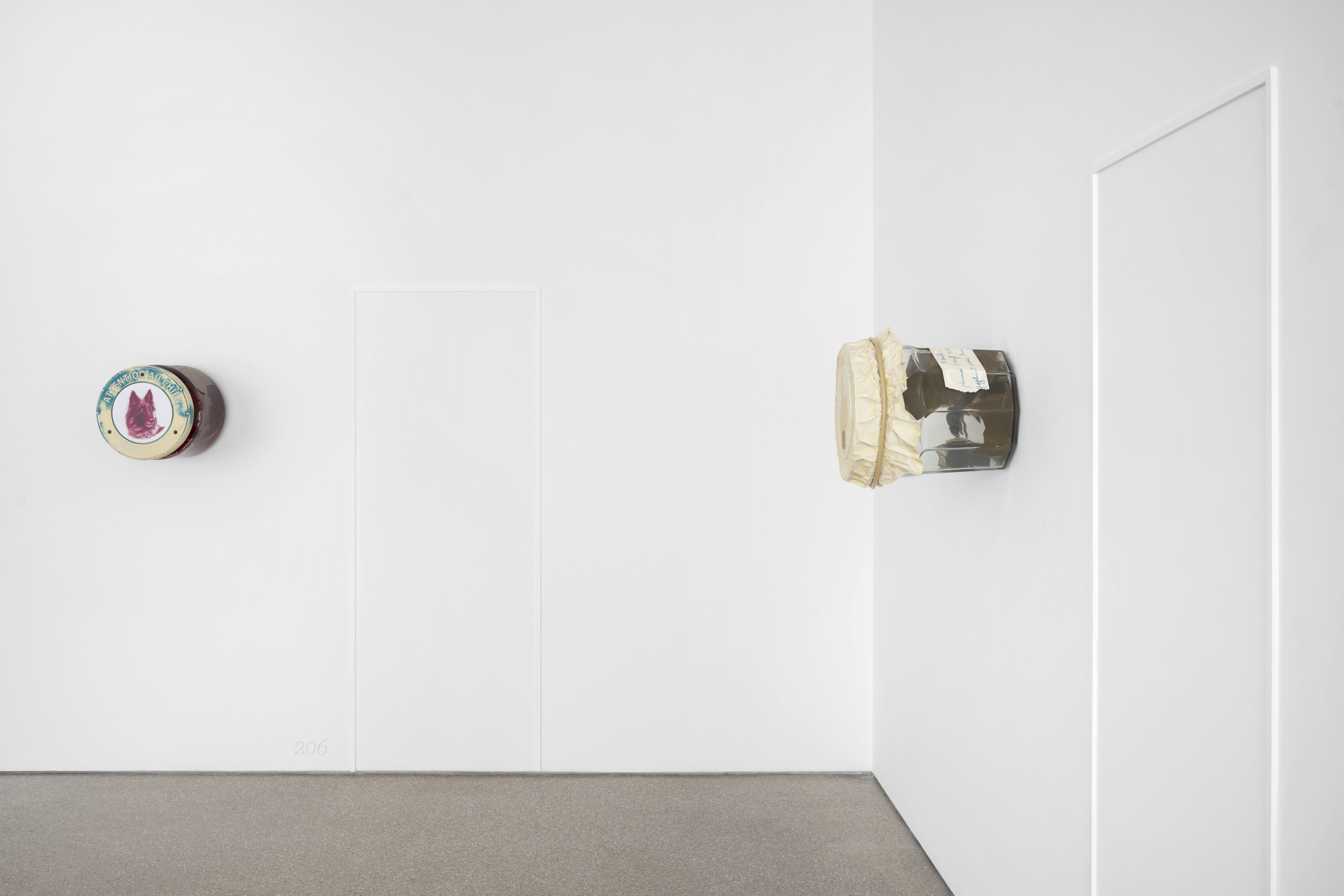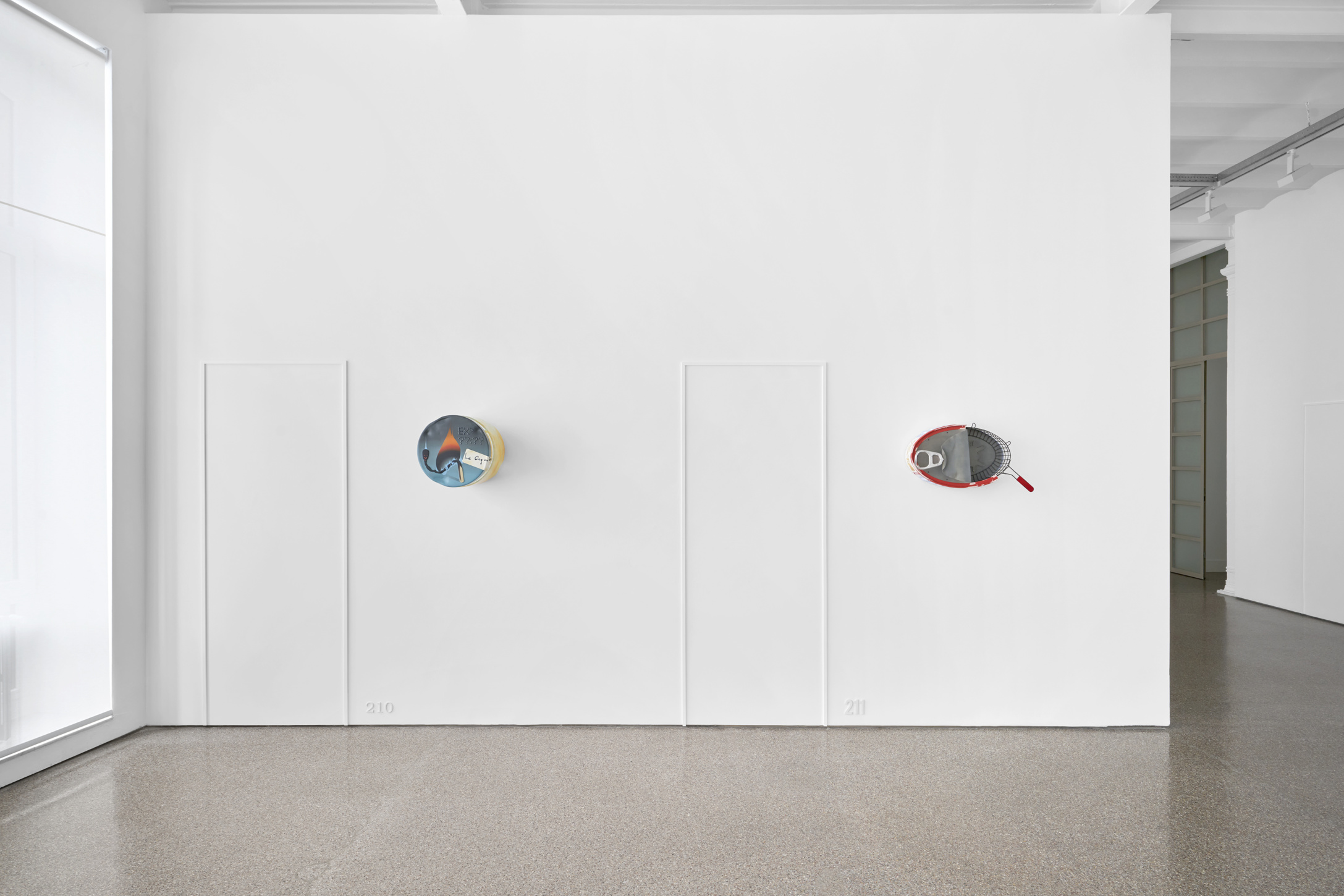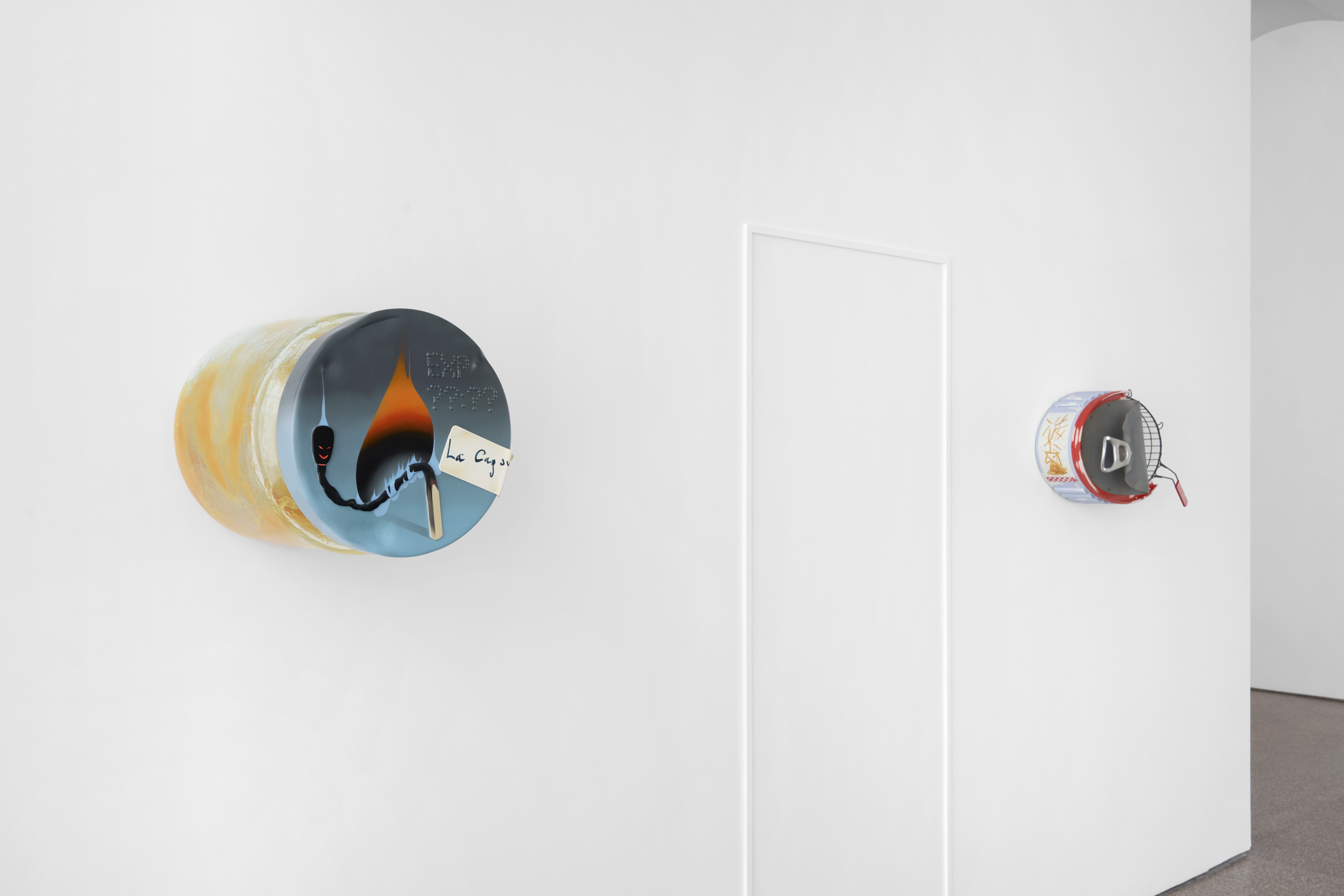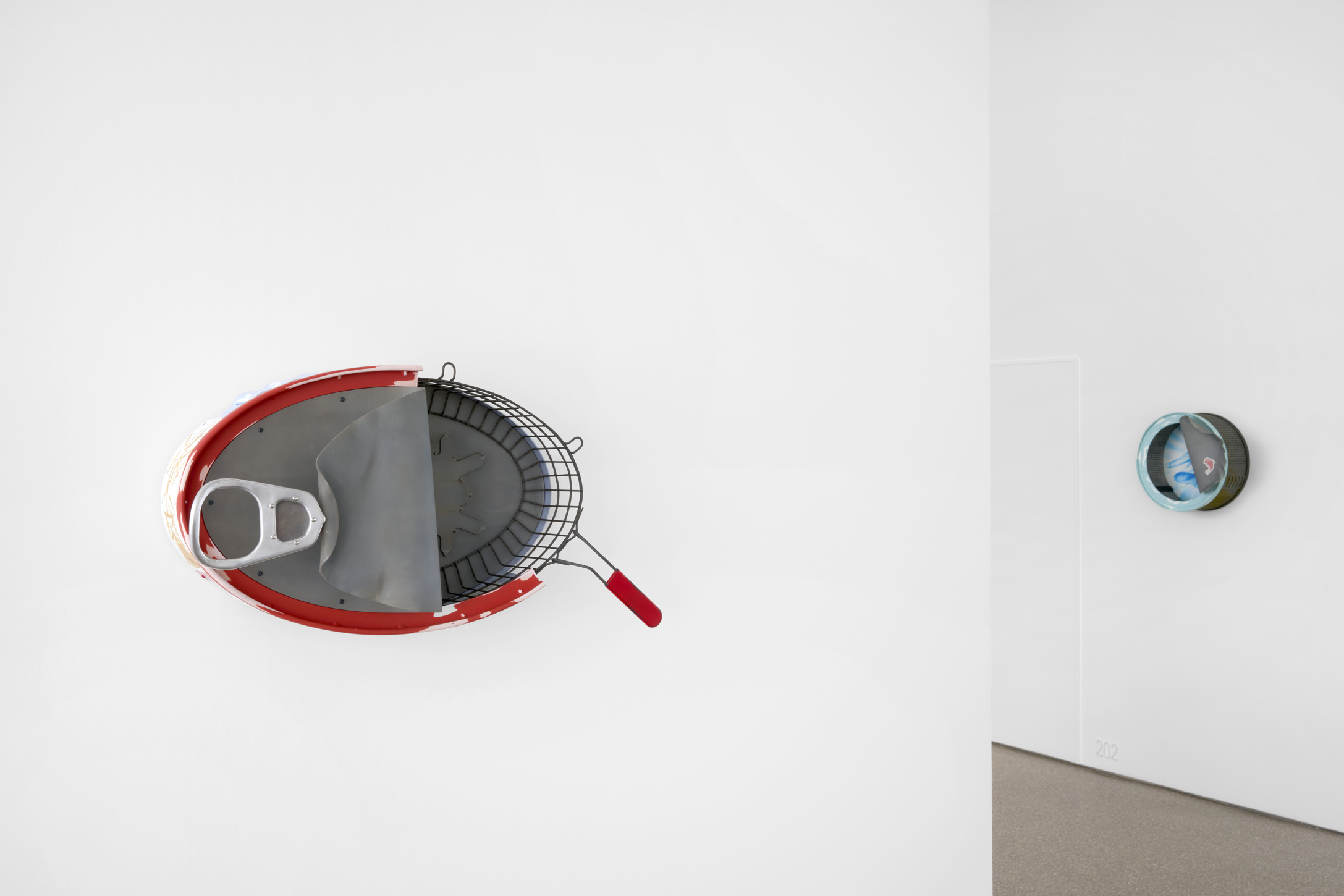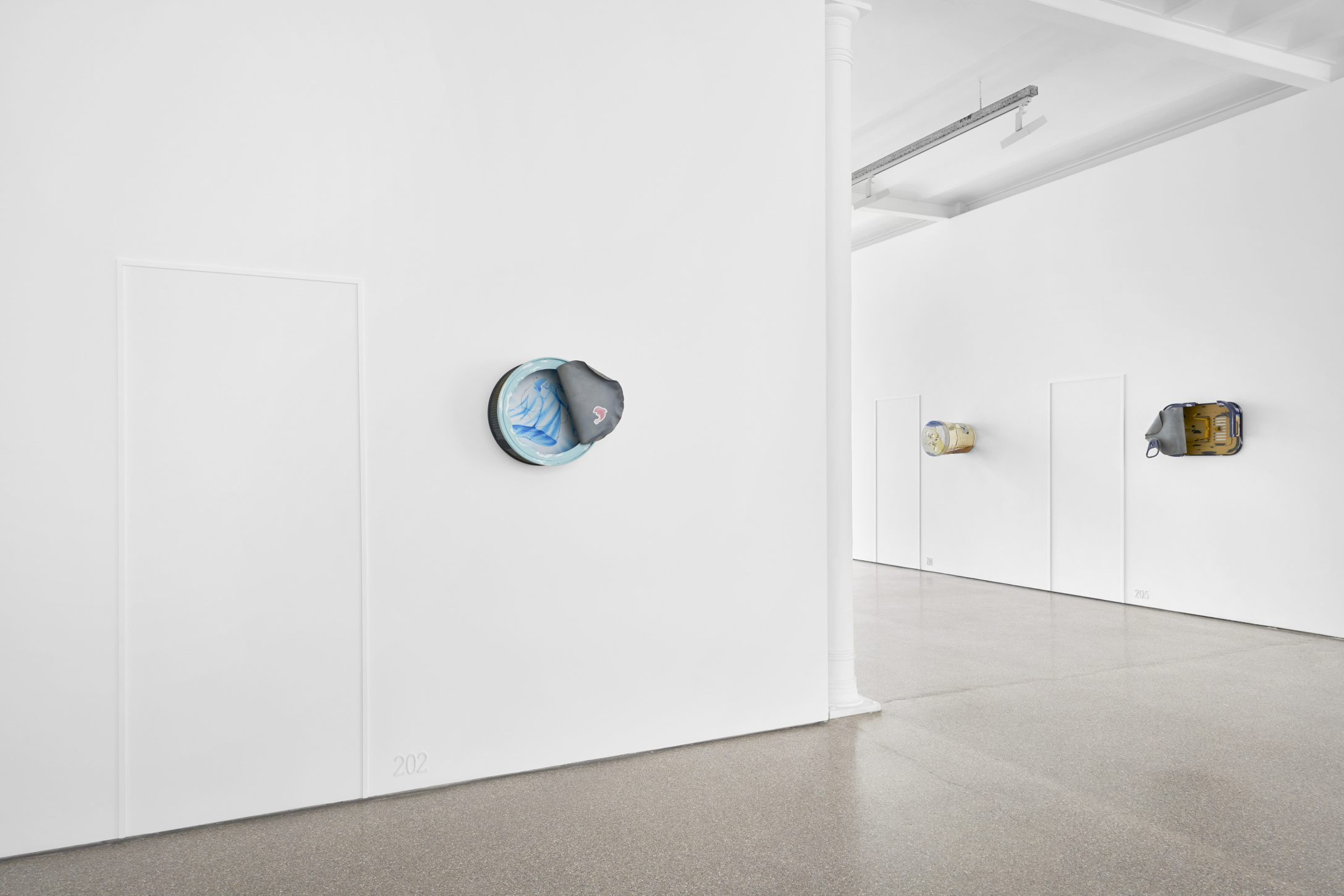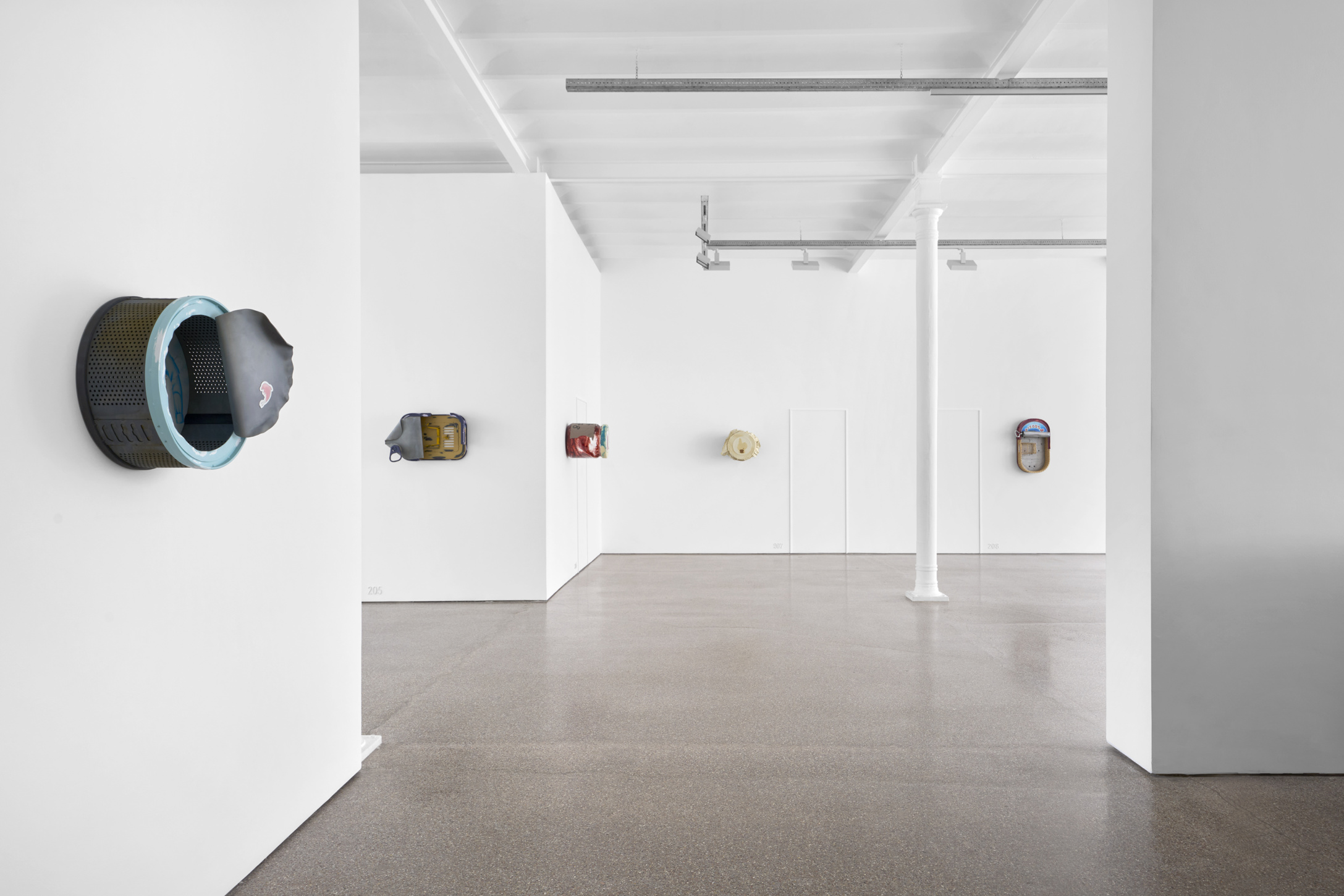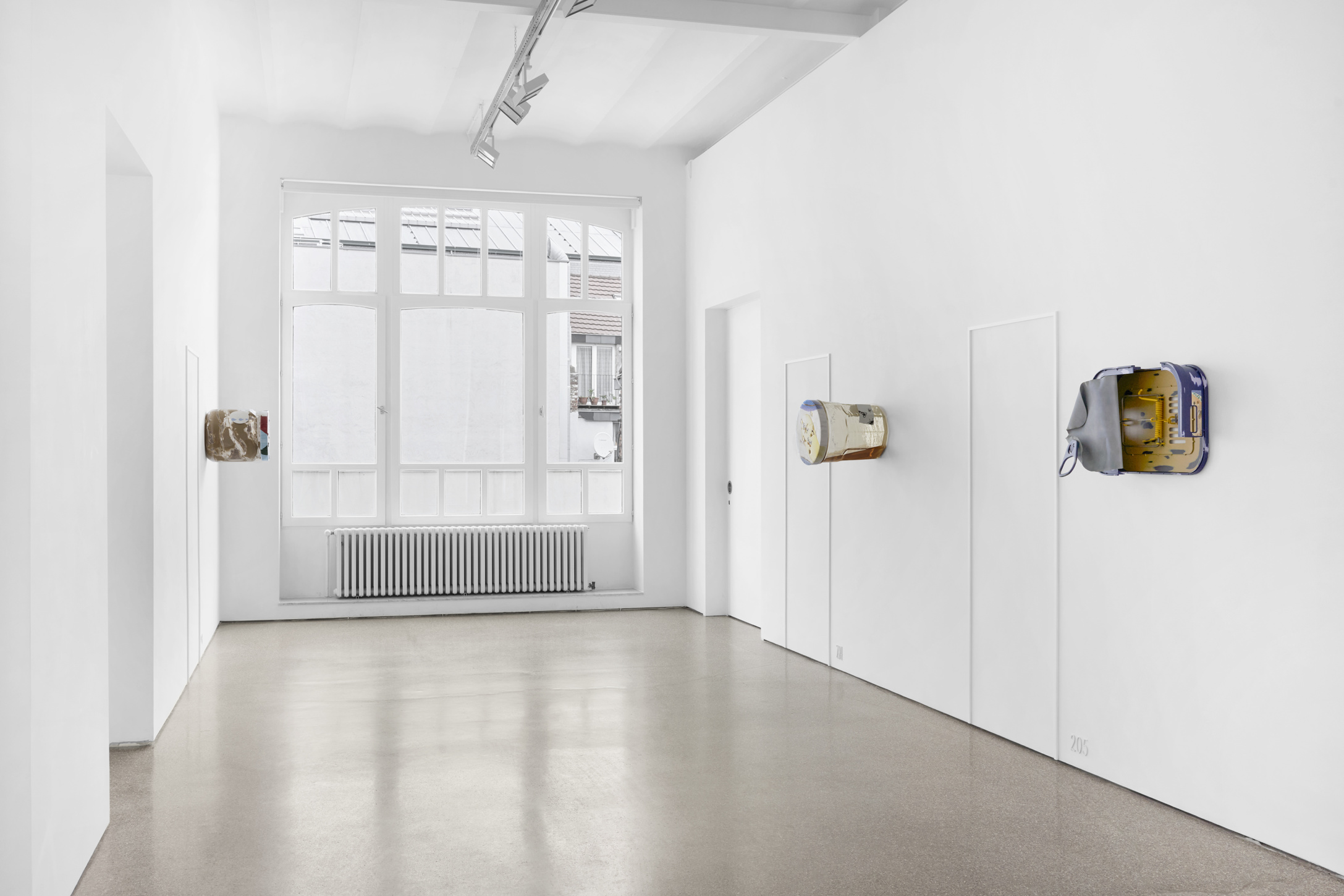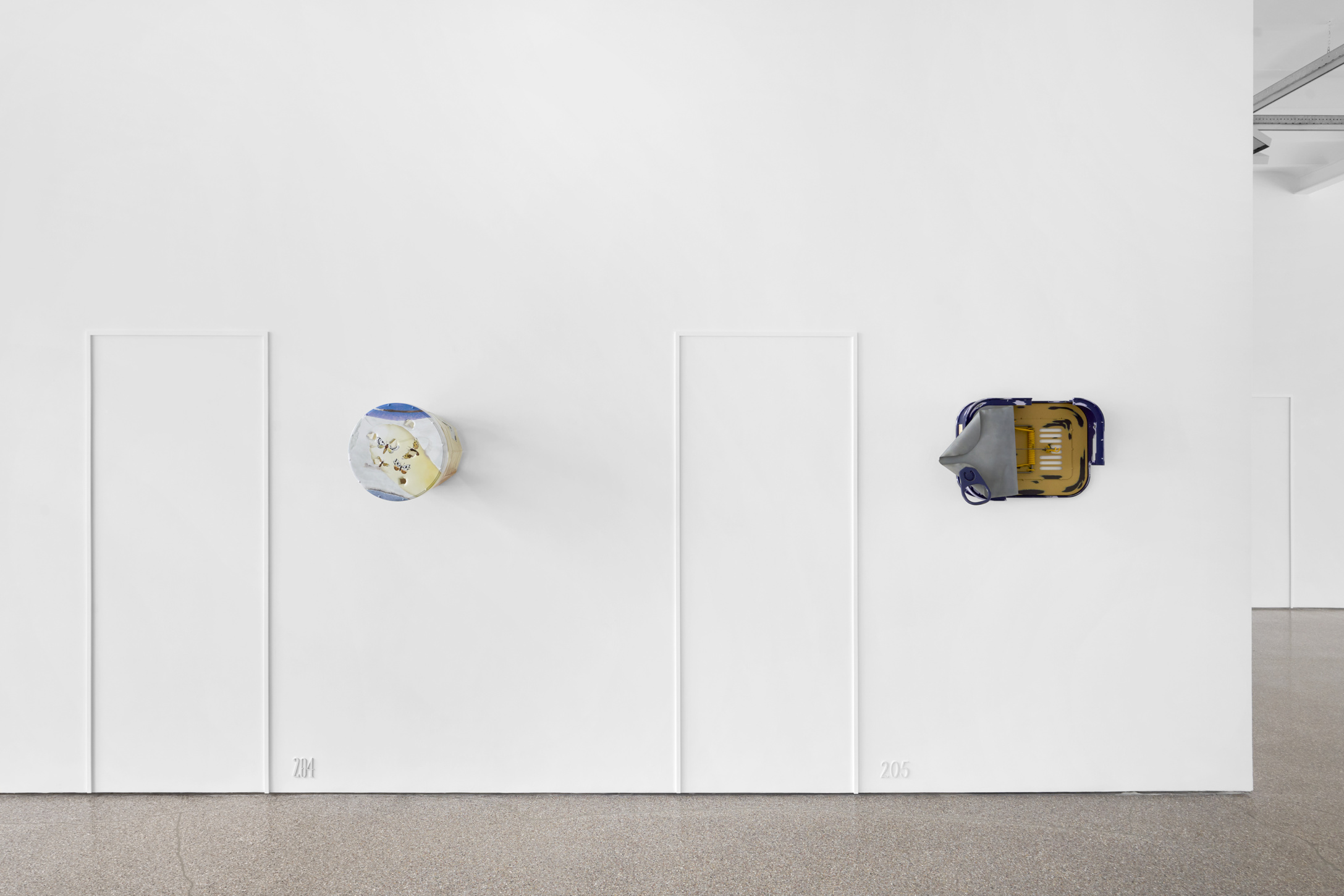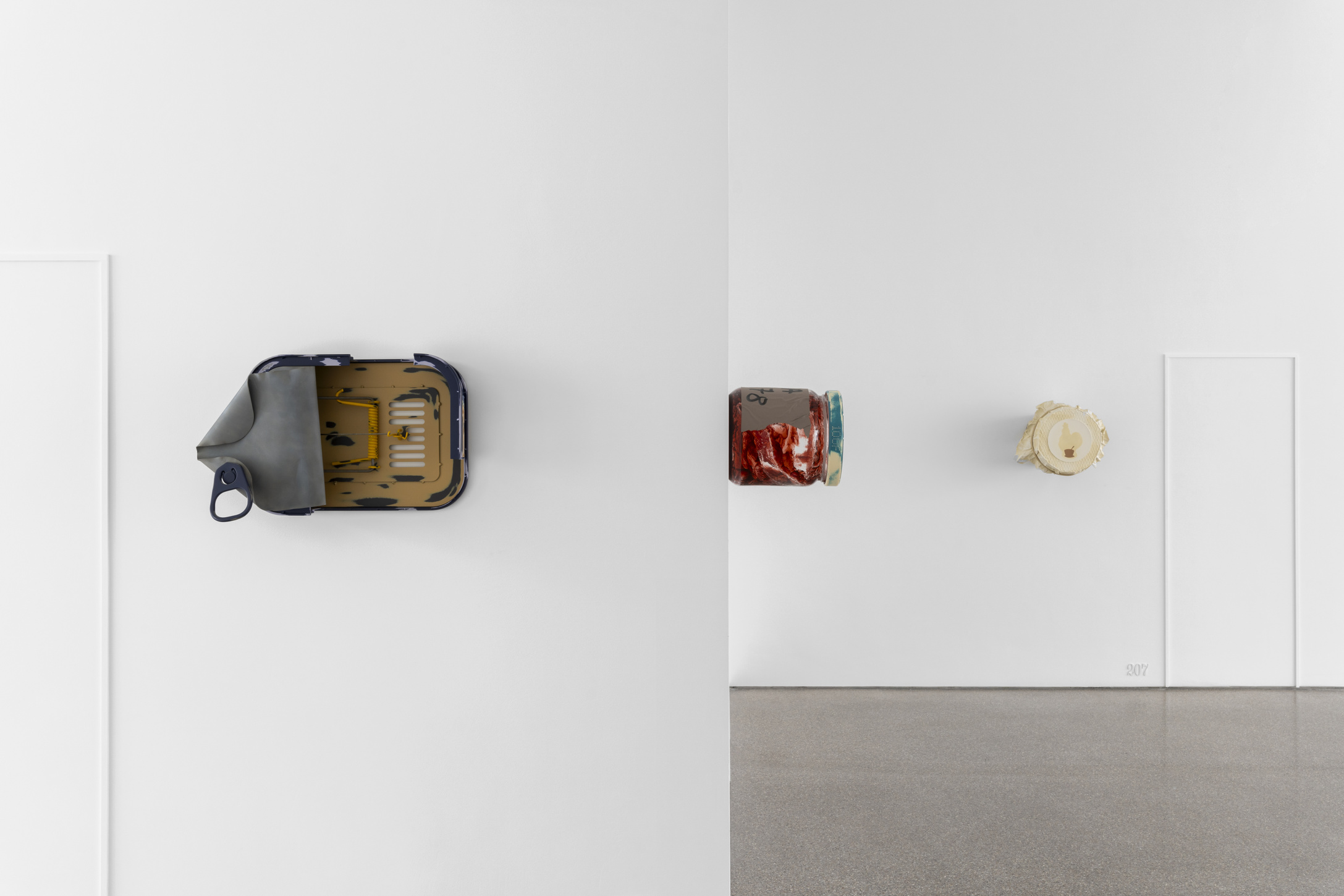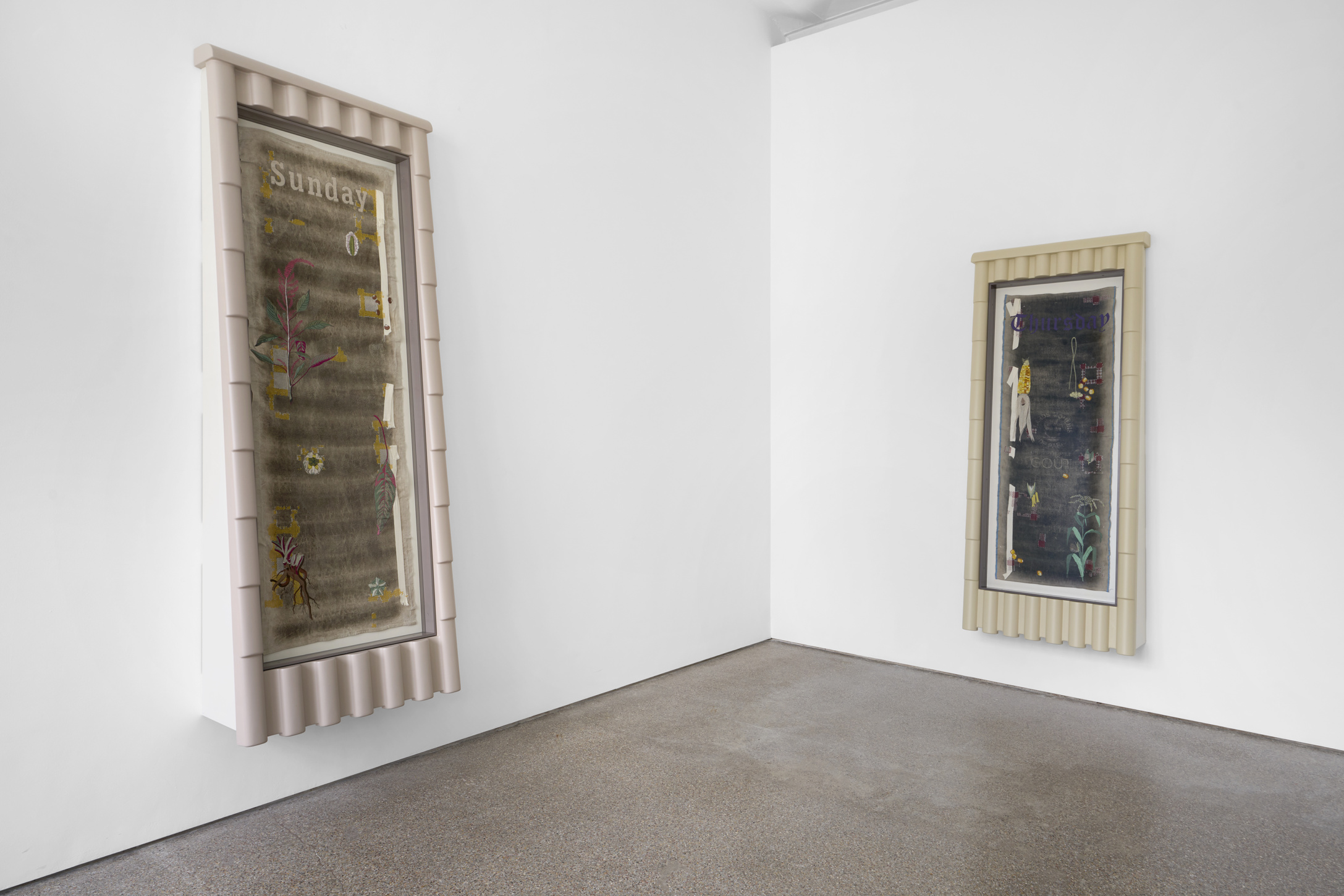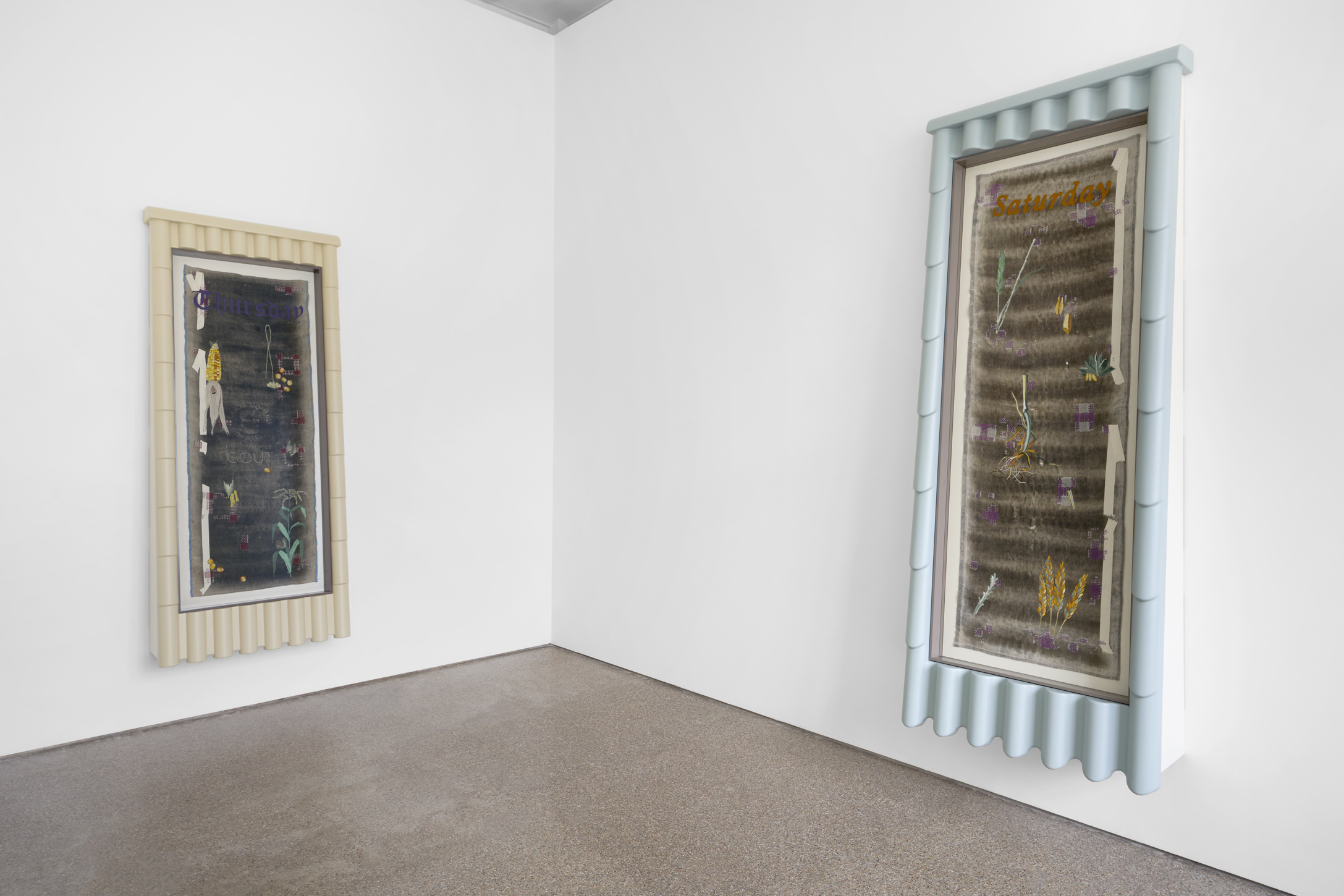“The trap is both a model of its creator, the hunter, and a model of its victim, the prey animal. But more than this, the trap embodies a scenario, which is the dramatic nexus that binds these two protagonists together, and which aligns them in time and space.” – Alfred Gell, Vogel’s Net: Traps as Artworks and Artworks as Traps, 1996
In the London-based artist Magali Reus’ exhibition HOTELS, silhouetted doors line adjacent walls of Galerie Greta Meert, refashioning the space as a transitory habitat for an array of occupants. Entering the gallery from the stairwell is not so much an arrival as a continued journey into a different quality of threshold space. A floor plan in the style of a hotel evacuation plan, available at the door, guides the visitor.
Numbered individually, each of the silhouetted doors is a waif – white against the white of the gallery walls – in a standardised size. Reus speaks of each door as a possible excursion into a hotel room, except here everything is left at the door, and with that, what might lay beyond is left to the imagination. Closed entries to short-stay accommodation, for Reus each door is also a display device, paired by wall-based works from her ongoing ‘Clementine’ series and new ‘Merlin’ series.
Reus began the ‘Clementine’ series last year. Modeled on the ubiquitous Bonne Maman fruit conserve jars, the homely face of corporate food production, their larger-than-life transparent bodies permitted glimpses into orchestrated mise-en-scènes of consumption and preservation held inside.
At Galerie Greta Meert, these new works divert from the familiar form of Bonne Maman to something more, as the artist puts it, “unhinged”. There remains, however, a suggestion of reappropriation: scaled-up, trompe-l’œil jars, filled with food for human and non-human alike, suggest domestic interspecies inhabitations inside the vessels and relationships to lure and entrapment. While the honey pot is repurposed as a lure and trap for household pests, its contents had once previously acted to lure a human consumer.
In Reus’ new ‘Merlin’ series, the relationship to entrapment is more explicit: implements of food capture, contemporary packaging and preparation are carefully laid inside one another: vessels newly inhabited by other things. Through their mimicry, achieved by sculptural techniques of scaling and juxtaposition of incongruous elements, the trap-like status of the ‘Merlin’ works considers and confuses animal and human habitats.
Ring-pull tin cans enlarged to the scale of a dog bed invite parallels between the variety of animal life and death co-existing within the domestic sphere. Reus is fascinated by the human/non-human animal relationships that unfold in this proximate managed and intimate space: vulnerability and hostility; a loved pet versus despised vermin; care and consumption. Imagery in the ‘Merlin’ series acts as both embellishment and a decoy for the viewer and the implied animal and human alike.
HOTELS continues Reus’ ongoing artistic investigation into the complex intra-dependence between material existence, social structures and ecological systems that, despite their fragility, continue to sustain us. Where the anthropologist Alfred Gell speculated on how traps and lures are like artworks and exhibitions, in HOTELS Reus questions the notion of a straightforward hunter-prey relationship and makes us consider how the “dramatic nexus” that binds seemingly autonomous protagonists together really is multiple, with a complex array of actors. While the gallery floor plan at the entrance is an aid to lure and entrap, it also maps our lines of escape.
Magali Reus (1981, The Hague, Netherlands) lives and works in London, UK. Upcoming and recent solo exhibitions include CAPC Bordeaux, Bordeaux (2027); Museum Beelden Aan Zee, Den Haag (2026); Kunstmuseum, Den Haag (2025); Fondazione Arnaldo Pomodoro, Milan, IT; Museo del Novecento, Milan, IT; Museum Kurhaus Kleve, DE (all 2024); Deeper Greens, Kunsthalle Bratislava, SK; Le Plat Principal, CAC la Synagogue de Delme, FR; On Like Scenery, Museum Dhondt-Dhaenens, Deurle, BE (all 2023); XII, The Approach, London; And Orchard, François Ghebaly, Los Angeles; A sentence in soil, Nasher Sculpture Center, Dallas; Shadow Tonics, Galerie Fons Welters, Amsterdam (all 2022); Pale Planets, Nuno Centeno, Porto (2021); As mist, description, South London Gallery, London (2018); Hot Cottons, Bergen Kunsthall, Bergen; Night Plants, Kunstmuseum St. Gallen, St. Gallen (both 2017); Mustard, The Stedelijk Museum, Amsterdam; Quarters, Fondazione Sandretto Re Rebaudengo, Turin (both 2016); Spring for a Ground, SculptureCenter, New York; Particle of Inch, The Hepworth Wakefield, Wakefield; Halted Paves, Westfälischer Kunstverein, Münster (all 2015).
Reus has been included in group exhibitions and screenings at Tate Britain, London; ICA, London; CCS Bard Hessel Museum of Art, Annandale-on-Hudson; Kestnergesellschaft, Hanover; Fridericianum, Kassel; LUMA Westbau, Zürich; Kunsthalle Wien, Vienna; The Stedelijk Museum, Amsterdam; Kunstmuseum Winterthur, Winterthur; Kunsthalle Bern, Bern; Museu Nacional de Arte Contemporanea, Lisbon, De Appel, Amsterdam and the British Art Show 8 (touring).
Reus was awarded the 7th edition of the Arnaldo Pomodoro Sculpture Prize in 2024, shortlisted for the Hepworth Prize for Sculpture 2018, and in 2015 was awarded The Prix de Rome. Her work is included in international collections including Tate Collection, UK; Stedelijk Museum Amsterdam; Centraal Museum, Utrecht; The Hepworth, Wakefield, UK; Collection CCS Bard Hessel Museum of Art, Annandale- on-Hudson; Kunstmuseum Winterthur; Kunstmuseum St. Gallen; Frac Grand Large — Hauts-de-France, Dunkerque; Lafayette Anticipation — Fonds de dotation Famille Moulin, Paris; LAM Museun, Lisse; Rubell Family Collection, Miami; Fondazione Sandretto Re Rebaudengo, Turin; Arts Council Collection, UK; The Government Art Collection, London; David Roberts Art Foundation, London; The Perimeter, London.
